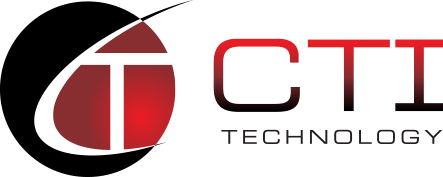How Can A Local Managed Services Provider Help Reduce IT Risks: Secure Your Entire Organization
In today’s increasingly digital world, managing IT risks is essential for organizations of all sizes. Local Managed Services Providers (MSPs) play a key role in reducing these risks by offering tailored IT solutions, proactive monitoring and maintenance, and strategic guidance. By partnering with MSPs, organizations gain access to industry best practices and resources that can help streamline operations, improve cost efficiency, and strengthen cyber-security measures.
MSPs work closely with their clients to identify specific needs and implement customized IT strategies, including the latest technologies and software, to stay ahead of threats. This proactive approach ensures organizations maintain high performance levels while minimizing downtime and potential IT issues. Furthermore, MSPs provide crucial support in business continuity and disaster recovery planning to help organizations build resilience and maintain operations in the face of unforeseen disruptions.
Key Takeaways
- MSPs offer customized IT strategies to reduce risks across organizations
- Proactive monitoring and maintenance by MSPs help minimize downtime
- Support in business continuity and disaster recovery strengthens organizational resilience.
Strategic Risk Management
As a local managed services provider, we aim to help organizations reduce IT risks across their entire operation. This section will discuss how strategic risk management plays a crucial role in achieving this objective.
Assessing and Prioritizing IT Risks
One of the first steps in strategic risk management is to assess and prioritize the various IT risks that your organization might face. We do this by:
- Conducting thorough risk assessments to identify potential vulnerabilities and threats
- Analyzing the likelihood of occurrence and potential impact on the organization
- Categorizing risks according to their severity and potential consequences
- Prioritizing risks to ensure that the most critical ones are addressed first
By addressing the highest-priority risks first, we help you focus your resources on the areas that matter most, ultimately reducing the overall risk exposure for your organization.


Developing a Comprehensive IT Strategy
Once we have assessed and prioritized risks, we work with your organization to develop a comprehensive IT strategy that addresses short-term and long-term goals. This includes:
- Alignment with business objectives: Ensuring the IT strategy aligns with your organization’s overall business objectives and goals.
- Technology deployment: Identifying the right tools and technologies that can help mitigate risks while promoting efficiency and growth.
- Resource allocation: Allocating appropriate resources towards risk mitigation and IT initiatives that support your organization’s strategic objectives.
- Monitoring and continuous improvement: Implement monitoring systems to track the strategy’s effectiveness and adjust as needed to continually improve and adapt to changing business environments.
By developing a comprehensive IT strategy, we help your organization build a strong foundation for long-term success.
Implementing Security Best Practices
To reduce IT risks across your entire organization, it is vital to implement security best practices. Some of the key security measures that we advocate for and help implement include:
- Regular security assessments: Routine evaluations of your IT infrastructure to identify potential vulnerabilities and implement timely remediations.
- Employee training: Ongoing training and education programs to keep your staff informed about security threats and best practices for mitigating them.
- Access control: Implementing proper access control measures ensures that only authorized personnel can access sensitive data and applications.
- Data backup and recovery: Implementing robust backup and disaster recovery solutions to minimize downtime and data loss in the event of security breaches or natural disasters.
Following these security best practices, we help your organization maintain a secure and reliable IT infrastructure that supports your business objectives while mitigating risks.
Proactive Monitoring and Maintenance
24/7 System Monitoring
At our local managed services provider, we understand the importance of continuously monitoring your organization’s IT infrastructure. Our 24/7 system monitoring ensures your devices and services are thoroughly analyzed in real-time. By closely monitoring your IT infrastructure, we can detect potential issues early, preventing them from escalating into costly problems that could disrupt business operations. Our IT professionals are always on the lookout for possible vulnerabilities and security threats, ensuring the protection of your valuable data.
Regular Maintenance Schedules
Apart from monitoring, we also focus on regular and preventive maintenance of your IT systems. Our structured maintenance schedules ensure that your systems are consistently updated with the latest security patches, performance enhancements, and necessary backups. The main goal of our regular maintenance schedules is to keep your IT infrastructure running at optimal efficiency, with minimal downtime.
- Security Patches: Frequent installation of security patches, protecting your systems from potential threats and vulnerabilities.
- Performance Enhancements: Timely implementation of performance improvements, ensuring the smooth running of your IT systems.
- Backup Management: Consistent backups of important data, reducing risks associated with data loss and helping in disaster recovery.
Predictive Analysis for IT Health
In addition to real-time monitoring and scheduled maintenance, our services incorporate predictive analysis for maintaining IT health. With the help of advanced analytics tools and techniques, we can proactively assess your IT infrastructure’s performance. This enables us to identify and address potential areas of concern before they escalate into significant issues.
Some key aspects of our predictive analysis include:
- Capacity Planning: Analysing current usage trends and predicting future resource requirements for efficient resource allocation.
- System Optimization: Identifying performance bottlenecks or inefficiencies, enabling us to recommend suitable solutions for optimization.
- Risk Mitigation: Detecting potential security vulnerabilities or compliance issues, allowing us to address the risks promptly.
By implementing proactive monitoring, regular maintenance schedules, and predictive analysis, our managed services aim to reduce IT risks across your entire organization, ensuring a secure and reliable IT infrastructure for your business.
Customized IT Solutions
As a local managed services provider, we recognize that every organization has unique requirements when it comes to IT. With this in mind, we offer customized solutions to help businesses reduce IT risks efficiently and effectively.
Tailored Security Protocols
We understand that one-size-fits-all approaches to security may not work for all organizations. Hence, our team of experts works closely with your organization to develop tailored security protocols that address your specific risks and vulnerabilities. By doing so, we help you:
- Identify and prioritize threats specific to your industry and organization
- Implement best practices in terms of security measures
- Regularly monitor and manage your security infrastructure
- Provide ongoing support and training for your employees
Some examples of security solutions we provide to our clients include:
- Firewall configuration to secure your network from external threats
- Multi-factor authentication to ensure only authorized personnel access your systems
- Data encryption to protect sensitive information from unauthorized access
Industry-Specific Compliance Standards
Different industries have varying standards and regulations regarding data protection and privacy. Our customized IT solutions consider these sector-specific requirements, ensuring your organization remains fully compliant. We provide:
- Assessment of compliance needs: We thoroughly analyze your organization’s current compliance status and requirements, identifying gaps or improvement areas.
- Development of policies and procedures: In alignment with your industry standards, we draft and implement IT policies and procedures to ensure compliance.
- Training and support: Our team offers dedicated support through training and workshops, ensuring your employees are well-versed in compliance regulations pertinent to your industry.
Some examples of industry-specific standards we help our clients meet are:
- Health Insurance Portability and Accountability Act (HIPAA) for healthcare organizations
- Federal Information Security Management Act (FISMA) for government agencies
- Payment Card Industry Data Security Standard (PCI DSS) for businesses dealing with payment card information
Our customized IT solutions help organizations adopt the necessary security protocols and meet industry-specific compliance standards, ultimately reducing IT risk across the entire organization.
Business Continuity and Disaster Recovery
As a local managed services provider, we understand the importance of ensuring that your organization remains operational in the face of unforeseen events. In this regard, we offer comprehensive business continuity and disaster recovery (BCDR) planning to help mitigate the impact of various threats, including natural disasters, cyberattacks, and equipment failures.
Robust Backup Solutions
A key component of our BCDR strategy is providing you with robust backup solutions to protect your critical data and maintain business operations. We implement the following techniques:
- Local backups: Ensuring your data is backed up on-site allows for rapid restoration in case of minor incidents.
- Off-site backups: Storing your data off-site in secure, geo-redundant locations to protect against catastrophic failures, such as natural disasters or fire.
- Cloud backups: Utilizing managed cloud services to store your data in encrypted format, offering both scalability and accessibility when needed.
- Regular testing: Frequently testing the backup and recovery process to verify its effectiveness and identify any potential bottlenecks or issues.
Disaster Recovery Planning
Aside from data backup and recovery, our disaster recovery planning minimizes downtime and maintains critical operations. We employ the following strategies:
- Risk assessment: We understand your organization’s unique needs and determine potential vulnerabilities to prioritize the necessary safeguards.
- Proactive monitoring and alerts: We utilize remote monitoring tools to detect and alert us to potential issues before they escalate into a disaster.
- Resiliency evaluation: We assess your current IT infrastructure for its ability to withstand and adapt to adverse events, with recommendations for improvement where needed.
- Recovery time objectives (RTOs) and recovery point objectives (RPOs): We establish targets for how quickly your organization can recover from a disaster and how much data loss is tolerable. This helps inform decisions regarding technology investments and processes.
Why Is CTI Technology The Best Choice For IT Services In The Chicagoland Region?






















